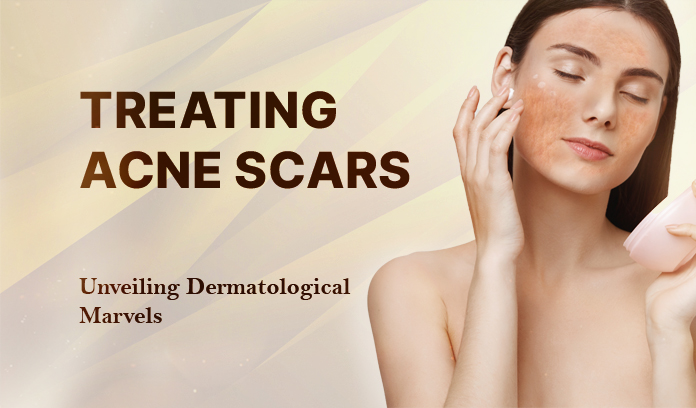Dealing with acne scars goes beyond mere aesthetics; it’s about reclaiming skin health and confidence. In this comprehensive guide, we’ll explore the different types of acne scars and delve into dermatological procedures that can make a significant difference.
Various dermatological procedures offer effective solutions to diminish or eliminate these scars, restoring a smoother complexion.
Types Of Acne Scars
Atrophic Scars
Atrophic scars result from a loss of tissue, creating depressions in the skin. Understanding the specific type helps in personalizing treatment plans.
Hypertrophic Scars
Caused by an overproduction of collagen during the healing process, Hypertrophic scars are usually raised and thickened.
Boxcar Scars
Boxcar scars have well-defined edges and are broader than the rest, creating a box-like appearance.
Ice Pick Scars
Ice pick scars resemble small puncture marks on the skin, as they tend to run narrow and deep.
Most acne scars, irrespective of type, often stem from factors such as inflammation, delayed or improper treatment, and genetic predispositions.
Prevention
Early and Effective Acne Treatment
Swift and effective treatment of acne can significantly reduce the likelihood of scarring.
Proper Skincare Regimen
Maintaining a consistent skincare routine helps in preventing acne and minimizing scarring.
Avoiding Picking or Squeezing
Resist the urge to pick or squeeze acne, as this can exacerbate scarring.
Home Remedies For Mild Scars
Aloe Vera
Known for its healing properties, aloe vera can help soothe and reduce the appearance of mild scars.
Vitamin E
Applying vitamin E oil can promote skin repair and fade scars over time.
Honey
With its antibacterial properties, honey can aid in scar reduction and overall skin health.
Dermatological Procedures Overview
While home remedies work for mild cases, dermatological procedures offer advanced solutions for more severe scars. Consulting a dermatologist is crucial for personalized advice.
Chemical Peels
Chemical peels involve the application of a chemical solution to the skin, exfoliating the outer layer and promoting smoother skin.
While they’re suitable for various skin types, they require careful consideration based on individual needs.
Microdermabrasion
Microdermabrasion uses tiny crystals to exfoliate the skin, revealing a fresh layer and reducing the appearance of scars. While effective, multiple sessions may be required for visible results.
Following proper aftercare instructions ensures optimal healing post-microdermabrasion.
Dermal Fillers
Dermal fillers add volume to depressed scars, creating a smoother skin surface. Different fillers cater to specific scar types; a dermatologist will recommend the most suitable option.
Understanding the benefits and potential drawbacks aids in making an informed decision.
Subcision
Subcision involves breaking up fibrous scar tissue, releasing the skin’s surface, and reducing scars. Allowing adequate time for recovery is crucial for optimal results post-subcision.
Choosing The Right Procedure
Dermatologist recommendation
Consulting a dermatologist is essential for personalized advice on the most effective procedure.
Assessing Individual Scar Types
Identifying the specific type of scar can help in choosing the most accurate or tailored treatment plan.
Budget Considerations
Discussing costs with a dermatologist ensures transparency and helps in planning for the chosen procedure.
Conclusion
When it comes to treating acne scars, the arsenal of dermatological procedures provides hope and tangible results. From chemical peels to microneedling, the path to smoother skin is paved with choices. Remember, consulting with a dermatologist before going for any treatment plan or intervention is advisable, as each skin and acne type requires tailored care.











